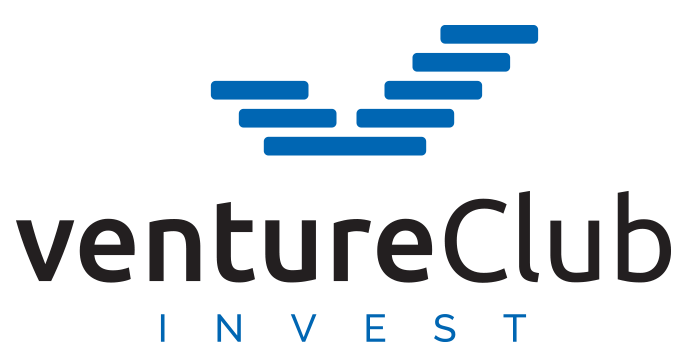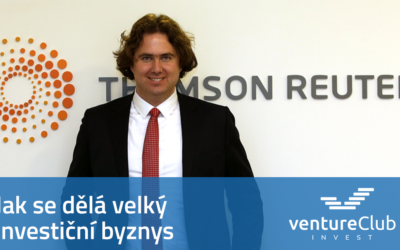to invest or not to invest, that’s what this is all about! How to correctly determine the value of a company, including predicting potential future growth? How to choose the right country, sector and company to invest in? What other information, besides the company’s scorecard and performance, should we be interested in before entering the project? These questions and many others were answered by Jan Kubík, Managing Director of the Czech branch of the financial section of Thomson Reuters. He let us take a peek under the hood of valuation of large companies, different approaches to investment analysis and the Thomson Reuters EIKON information platform, which is now used by brokers and analysts around the world for their work.
Does the name Reuters ring a bell?
Why should we care what Reuters says? You may have noticed the name Reuters under articles or quoted in articles by various journalists or heard their name during the evening news. It is one of the largest news agencies in the world. Media outlets all over the world buy information from their journalists; it is a kind of global CTK. How is it different from its competitors? They are very careful about the truthfulness of the information they publish. Their journalists are strictly forbidden to publish unverified information. Unless they get it from at least two independent sources, or one “unique” source (for example, the prime minister or a business owner), they are not allowed to publish the information.
This is because Reuters journalists, through their news and mentions, serve the rest of the world to make decisions to invest billions of dollars and crash companies on the stock markets. Reuters belongs to the Thomson Reuters group, which supplies information (including news) to most sectors, including law and consulting firms, financial institutions, manufacturing companies, energy companies and others. Thomson Reuters today has over 45,000 employees worldwide with annual group-wide sales in excess of $11 billion.
How to analyse investment projects
Today, the most common approach is the so-called Top Down Analysis, during which we try to look at an investment opportunity from a global perspective (macro environment), a sectoral perspective (industry situation) and finally purely with a focus on the selected company. The macro analysis consists of the political situation in the country, economic indicators, news coverage and legislative investment restrictions. When necessary, it also includes an in-depth analysis of the information found, which is the most expensive part of the entire evaluation. Next up is a narrower sector analysis. This identifies what the trends are in the sector, how the sector is being covered in the media and what potential developments the investor can expect for the sector given other factors and market information.
Finally, once they have established whether investing in the sector and location makes sense, the actual analysis of the selected company comes next. For the latter, it always depends on the availability of data. There is a difference between publicly traded companies and private companies where everything is done behind closed doors. In addition, different countries also have different reporting formats and legislative obligations to publish results. All this is made very easy by the EIKON information platform, where they publish all the information they verify. Customers can access the information according to the package they subscribe to. In a world where most information can be found online, it is the speed of conveying the information that has value – that is why the most expensive ones have real-time stock exchange information.
How companies are valued
Only when we know all the previous can the actual valuation of the company come into play. This is where the so-called multiple comes in – a form of company valuation that can be based on comparing the size of the company to the share price or the value of the company to the assets owned. This makes it possible to compare a small company with a unique technology with a colossus of 1,000 employees – because even though the price of a large company with higher passives and assets may be several times higher, multiples show us which company has a better “price” according to the chosen parameters. In the end, the multiples will show us which is a better quality buy and, ultimately, a better bargain. The EIKON company valuation information platform offers, among other things, three basic models: DCF analysis, transaction multiply and business multiply.
DCF analysis is the principle of valuing a company by looking at its earnings, evaluating its growth in relation to the company’s history, current trends and the market situation. We convert the expected income from the investment into a present value to determine whether the investment will pay off (the present value of future flows is greater than the amount invested) or not (the present value of future flows is less than the amount invested). The second method is transaction multiples, where we look at the price at which similar companies have been sold in recent history. In order to compare prices, we calculate a “multiple”, i.e. a price-to-size ratio (e.g. Enterprise Value to EBITDA*) and if we know the performance of the company being valued, we can calculate the theoretical value of that investment. The only problem here is that while most such transactions are done publicly, most buyers and sellers do not disclose the size of the transaction. The third method is business multiples – where we evaluate how much it would be possible to buy a stake in a publicly traded company that is similar to the one we are considering investing in (called a peer or peer group). For investments in private companies, we then need to consider a liquidity premium over publicly traded companies, which is typically in the range of 10-20%.
What else do we need to know?
We now know the potential value of the company and know that it is suitable for investment. What now? Do we invest? Not yet, we have one final step to take – Enhanced Due Diligence. Jan Kubik jokingly referred to it as “due diligence”. Its essence is to find out if there is a skeleton in the closet behind a given person, company, team. A background check can focus on a company’s history or its ability to deliver on its promises, as well as the background and history of individual players in the company.
Imagine you want to invest in a company in China, but you don’t have enough information about it. So you order an Enhanced Due Diligence report from Thomson Reuters and they send their local analyst to do a full analysis of the project from public records and other publicly available sources. Recently, so-called ESG (Environmental, Social and Corporate Governance) analysis has also become very popular. Which is an extension of the classical fundamental analysis to include non-financial factors such as environmental footprint (e.g. total CO2 emissions, etc.), social responsibility (prohibition of child employment and its enforcement among suppliers), etc. Because nowadays funds and individuals no longer invest only according to the “suitability” of the opportunity, but just as we in the club try to do only sustainable and socially beneficial projects, these aspects are becoming important for others as well.
Venture Club’s view
Most of the data that Thomson Reuters clients use to make their decisions and recommendations is freely available. Local statistical offices, data from non-profits, information from news agencies, buzz on social media, borrower registries, registrations with authorities, local banks. Some of these are also publicly available at www.reuters.com with lots of free financial data. Thus, you can get a lot of interesting and useful data for free just without using the paid global information platform Thomson Reuters EIKON. The lecture gave us an insight into how to do business that moves the world. Although most of the data is inaccessible for our venture capital investments, because after all these are companies and projects that are still growing, the latter ESG analysis and Due Diligence are approaches that have been a great inspiration for all of us.
- Ebitda = (Earnings before Interest, Taxes, Depreciation and Amortization) Earnings before interest, taxes and depreciation.

